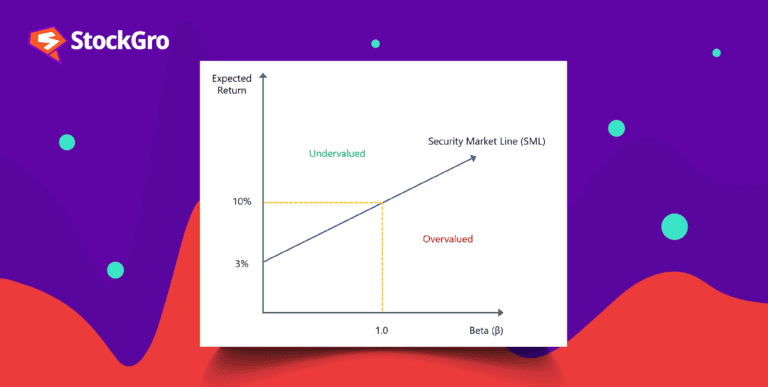Table of contents
The stock market plays a crucial role in the modern economy. When it comes to investing in stocks, you need to be aware of market indices that help in tracking market performance.
In India, Nifty (National Stock Exchange) and Sensex ( Bombay Stock Exchange) are the two vital stock market indices or exchanges. Both these indices offer valuable insights to traders and investors before making any investment. But what do these benchmark indices mean, and how do they differ?
What is an Index?
A stock index is a highly curated collection of top-listed companies ranked on market capitalisation. The index value indicates the performance of the stocks under consideration, thereby giving a bird’s eye view of the overall market.
Indices are calculated for the entire market and also for each sector individually. You can invest in stock indices and businesses through ETFs and mutual fund schemes.
In the Indian stock market, there are two benchmark indices- S&P BSE Sensex and S&P CNX Nifty.
What is Sensex?
Sensex or the Sensitive Index is the Bombay Stock Exchange’s index that represents a diverse sample of publicly traded companies.
The Sensex index chooses 30 companies as the most alluring, effective, and best for the market. If these businesses aren’t doing well, market trends also fall. But if these 30 businesses outperform, the market trends are positive.
Sensex follows certain criteria to select companies to list under it. These are-
- High liquidity
- Industry representation
- Average daily turnover
- Market capitalisation
What is Nifty?
Also called the National Stock Exchange Fifty (NSE), Nifty is the benchmark index of the NSE. The top 50 firms from various sectors and industries listed on the NSE make up the Nifty.
The index covers large-cap corporations, which are often listed on stock exchanges and have a high level of liquidity. These firms account for 70% to 75% of India’s market capitalisation.
How to calculate Sensex and Nifty?
Both Sensex and Nifty use market capitalisation to initially determine the value by multiplying equity by the market price.
The equity capital is multiplied by the price, further with the IWF (Investable Weight Factor), to get the free-float capitalization. Then, Nifty and Sensex are determined daily by using the base index value, current market value and the base market capital.
Sensex formula = (Free float market capitalization of 30 companies / Base market capitalization) * Base value of the Index.
Nifty formula = (Current Market Value / Base Market Capital) x 1000
What is the difference between Sensex and Nifty?
| Parameters | SENSEX | NIFTY |
| Incorporated | 1986 | 1996 |
| Number of companies | 30 | 50 |
| Amalgamation of words | A combination of Sensitive and Index | A combination of National and Fifty |
Base value for calculation | The base value used for the calculation of the index is 100 | The base value used for the calculation of the index is 1000. |
Owned by | Owned by the Bombay Stock Exchange | It is both owned and managed by NSE subsidiary- Index and Services and Products Limited (IISL). |
What are the factors that affect index performance?
The country’s economic status plays an important role in the performance of indexes. When the economy is doing well, it reflects in the stock market’s stronger performance and positive change in indices. Factors influencing index performance are:
- Interest rate fluctuation: The stock market and interest rates are always opposites. Lending gets more expensive when the economy’s interest rate increases.
- Inflation: Strong inflation leaves investors with less disposable income and negatively impacts businesses due to the increasing cost of living. Consequently, the stock market experiences a decline.
- Global economy and political structure– Sensex and Nifty can change their course due to structural changes in the global economy and politics.
Conclusion
Since we have covered how Sensex and Nifty are two major indices in the Indian stock market, it will help to understand what’s happening in the overall stock market. These major indices reflect the market’s health and exhibit various characteristics. Analyze and learn before engaging in stock trading.
FAQs
Bank Nifty or Nifty Bank is the stock market index of the NSE representing the performance of the country’s banking stocks. It comprises the top 12 banking stocks with respect to liquidity and market capitalisation.
Sectoral indices are indices on the BSE and NSE that represent the performance of specific sectors listed on the stock exchange.
For example, NIFTY pharma is an NSE sectoral index, showing the performance of pharma stocks. S&P BSE Auto is a sectoral index on BSE for automobile stocks.
As of 14 Dec 2023, NIFTY closed at 21,182.70 and SENSEX closed at 70,514.20. Both values constantly get updated and can be found on various websites, including the official websites of BSE and NSE. Tracking them every day helps determine how the market is doing today compared to yesterday.
Indices cannot be bought directly. However, investors can invest in exchange-traded funds and mutual funds with schemes replicating the index. Investors can also enter derivative contracts like futures and options to speculate changes in stock market indices.
